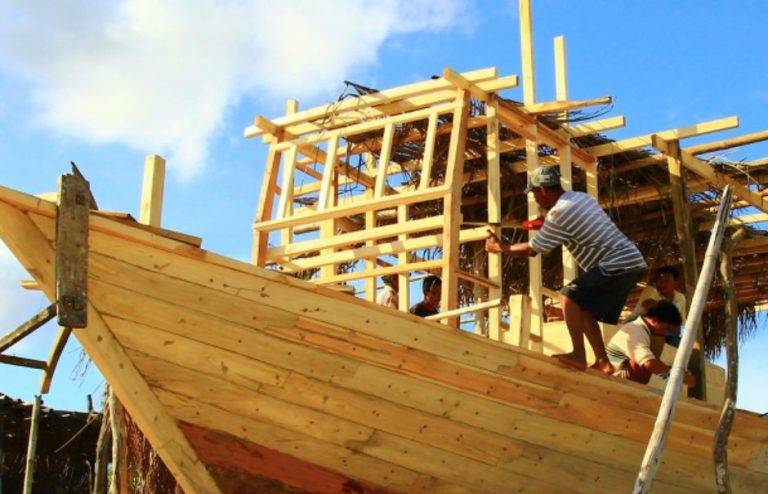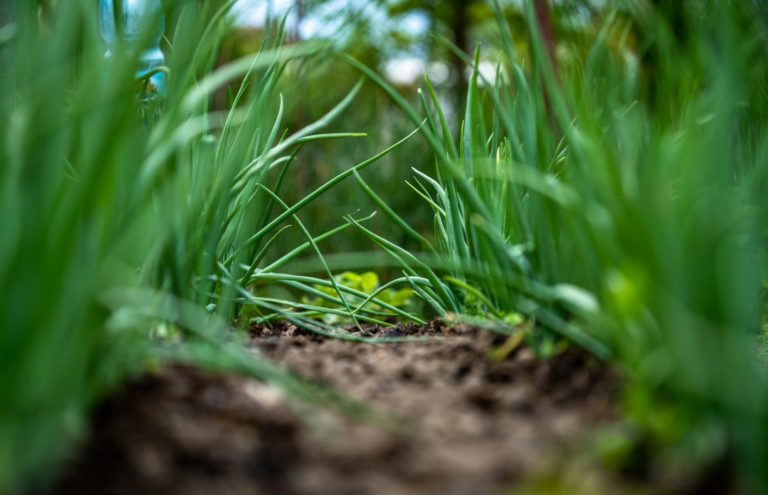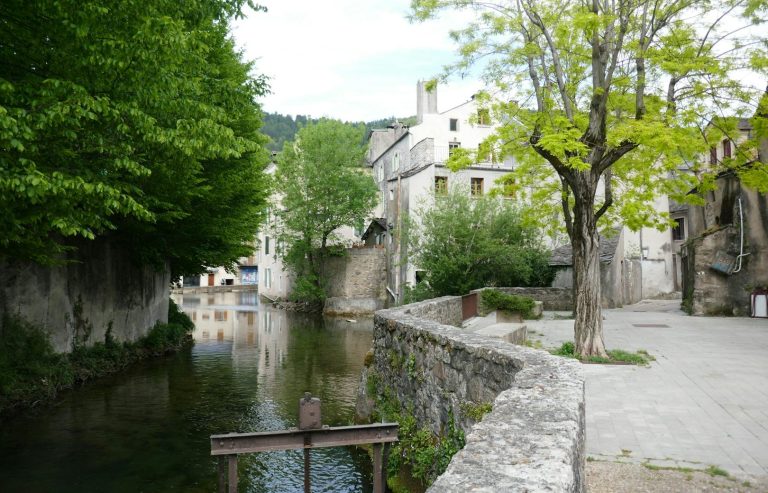FUN FOREST FACTS
SUSTAINABLE CARBON FORESTS
- Fast growing
- Insect resistant
- Deep rooted, stabilising soils
- Enrich soils with nitrogen
- Trees harvested in 5 years
- Absorb 12.5 tons per ha of Co2 annually
- Strong sustainable timber
- Additional industries (bio-mass production)
THE TREES
- Species - Paulownia Elongata (known as the aluminium of wood)
- Fast growing - can achieve a 92 kg tree in 3 yrs
- Strong timber - 40% stronger than pine
- Coppice - no need for replanting
- Lightweight
- Timber doesn't crack, twist or warp
- Limited knots
- Air curable
- Noise insulating
- Fire and water resistant
- Low timber water content when trees are cut
- Calorific value between 4,400 and 5,020 kcal/kg
Timber uses:
- Construction
- Boat building
- Musical instrument making
- Furniture making
- Surf boards & canoes

SOIL
- Saturates the soil with nitrogen.
- 8 meter Tap root
- Deep-root system stabilises soils
- Minimal water requirments
- Forests complement surface crop cultivation

BIO-MASS
- Biomass yields total 40-60tons per hectare annually
Bio-mass uses:
- Animal fodder - fresh and dry
- Bio-fuel
- Bio-gas
- Bio-ethanol
- Gastronomy
- Paper making
- Perfumery
- Cosmeceuticals
- Medicinal purposes
- Herbal remedies


Around the world projects using Paulownia trees
Examples of successful international projects in different geographical contexts which involve the active cultivation of Paulownia trees for different uses

Australia
- The trees help regenerate areas damaged by mining, logging, or poor agricultural practices. The trees offer shade and windbreaks for crops, reduce soil erosion, and improve water retention—all crucial in regions where water scarcity

New Zealand
- New Zealand is using Paulownia plantations for fast timber production, carbon capture, land restoration, and agroforestry systems—helping both the environment and rural economies.

Spain
- Spain faces issues such as soil erosion, especially in its southern and arid regions. The Paulownia tree is used in land restoration projects and in agroforestry systems where it is planted alongside crops or livestock.

Germany
- Germany is using Paulownia plantations primarily for their role in sustainable timber production, climate change action, and innovative land use.
- Germany invests heavily in climate-smart forestry and bioeconomy innovation.

Italy
- The Paulownia tree is drought-resistant and can thrive in Mediterranean climates, making it ideal for many parts of Italy. The tree’s high-yield biomass increases its potential as an important resource in Italy’s push towards increased green energy production.

France
- France is a leader in agroecology. The Paulownia tree fits well in its agroforestry systems.
- France is using Paulownia plantations to produce eco-friendly hardwood, capture carbon, and innovate in agroforestry which support both its environmental policies and green economic transition.

Greece
- Greece faces frequent wildfires which leave degraded land behind. Paulownia trees are used to rehabilitate burned or barren landscapes—thanks to their deep root system and fast regrowth.

United Kingdom
- The United Kingdom’s investment in Paulownia plantations reflects a multifaceted approach to achieving environmental sustainability, economic diversification, and climate resilience.

Portugal
- Portugal is using Paulownia plantations to restore fire-damaged land, produce renewable timber, capture carbon, and revitalise rural economies—all of which align with the country’s environmental and economic priorities.

Austria
- Austria has a strong wood and forestry industry, and Paulownia offers a fast-growing, high-value wood that complements native species.
- As Austria experiences longer dry seasons and changing precipitation patterns, Paulownia is being considered for: drought-tolerant forestry trials, restoration of degraded agricultural lands, and biodiversity buffers and hedgerows.

Switzerland
- Switzerland’s investment in Paulownia plantations reflects a multifaceted approach to achieving environmental sustainability, economic diversification, and climate resilience.

Sardinia
- Sardinia is adapting its land-use strategies to cope with climate change and Paulownia trees help make rural areas more resilient.
- Paulownia plantations provide habitat for wildlife and promote pollinator-friendly environments, especially when managed alongside native species.

Belgium
- Belgium is investing in green architecture and Paulownia wood is ideal for thermal and acoustic insulation, wall cladding, interior design, and lightweight prefabricated structures.
- Municipalities are incorporating Paulownia trees in urban greening strategies to reduce heat islands and absorb CO2 emissions from traffic and industry.
- Paulownia trees produce large, nectar-rich flowers that attract pollinators such as bees which are declining in Europe.

Romania
- Romania cultivates Paulownia trees for afforestation of degraded land and to provide fast income for rural communities.

Hungary
- Hungary uses Paulownia trees to assist its growing use of bioenergy and timber.
- Hungary is involved in the EU’s reforestation and carbon credit initiatives.

Croatia
- Many rural regions in Croatia face population decline and abandoned farmland. Paulownia trees are used for biomass energy and biochar production—activities which contribute to Croatia’s renewable energy mix. As an EU member, Croatia is pushing towards a zero-waste, bio-based economy.

Bulgaria
- Bulgaria is using Paulownia plantations—turning underused land into profitable eco-friendly resources—to boost rural economies, produce sustainable timber and biomass, and meet EU environmental targets.

Poland
- Polish farmers are under pressure from fluctuating crop prices and the impacts of climate change. Poland has areas of post-industrial and degraded farmland, especially in regions with a mining or heavy industrial past. Even in such poor quality/damaged soils, Paulownia trees grow quickly, making them ideal for land rehabilitation.

Czechia
- In recent years, bark beetles have devastated Czech forests. Warming temperatures have worsened the damage. Paulownia trees offer a fast-growing alternative to replace lost forests, regenerate degraded land, and restore economic forestry activity.
- The country sees Paulownia as a fast-growing, eco-friendly solution to a range of economic and environmental challenges.

Slovenia
Slovenia is working to reduce its reliance on fossil fuels and increase renewable energy sources.
Paulownia trees are a renewable biomass source that support the country’s sustainable energy production and reduce imports of foreign energy.

Slovakia
- Paulownia plantations contribute to preserving Slovakia’s biodiversity and offer habitats to various species including birds and insects which are essential pollinators for agriculture.
- Slovakia’s adoption of Paulownia plantations is a strategic initiative to address such issues as environmental restoration, economic diversification, and sustainable development.

Ukraine
- Scientific studies have been conducted to assess the growth dynamics of different Paulownia clones in Ukraine’s forest-steppe zones. Nurseries in Ukraine, such as those operated by Paulownia Energy, have developed frost-resistant Paulownia tree hybrids which are capable of withstanding temperatures as low as -27°C. These hybrids are tailored to Ukraine's climatic conditions, ensuring successful cultivation and high-quality timber production.

Turkey
- Türkiye has a high demand for timber in construction, furniture, and packaging industries.
- Türkiye is investing in renewable energy, and Paulownia trees produce high-yield biomass suitable for bioenergy production. Paulownia tree use in biomass industries supports Türkiye’s national goals to reduce fossil fuel dependency and develop green energy alternatives.

USA
- Paulownia trees can be used as a bioenergy crop to contribute to the USA’s growing bioeconomy and reduce dependency on fossil fuels. Such an approach supports the country’s innovation in bioproducts and green energy sectors.
- Paulownia plantations in the USA have required substantial initial financial investments. Such investments are estimated at approximately $1,128 billion USD for planting 1.5 million trees over 2,400 hectares to capture 1.04 million tons of CO₂ over a decade.

Costa Rica
- The cultivation of Paulownia trees in Costa Rica not only presents a promising approach to sustainable forestry, but also offers environmental benefits and economic opportunities. Ongoing research and development efforts continue to optimise its integration into the country’s reforestation and agroforestry strategies.

Paraguay
- The development of Paulownia plantations contributes to diversifying Paraguay’s economy, particularly in rural areas, which in turn creates new industries and employment opportunities.

Guyana
- Although traditional timber production remains a cornerstone of Guyana’s economy, integrating Paulownia plantations offers a new avenue for sustainable forestry practices and economic diversification.
- Guyana’s interest in Paulownia plantations reflects a strategic approach to balancing environmental conservation with creating new economic opportunities for its citizens.

Panama
- Panama has embraced the cultivation of Paulownia trees as part of its reforestation and sustainable forestry initiatives. The country’s favourable climate and commitment to environmental conservation make it an ideal location for Paulownia plantations.
- Several projects such as the Bayano River Basin Reforestation project have been initiated to establish Paulownia plantations in Panama.
- Another project is the Princess Project which involves reforesting 500 hectares of land in Panama with the fast-growing Paulownia elongata species to create a sustainable timber plantation.

Mexico
- Paulownia trees are cultivated across various Mexican regions, including mountainous areas and plains. The trees adapt well to subtropical clay soils rich in humus, red tropical soils, and even dry steppes. The trees thrive in a temperature range of 24°C to 29°C.

Colombia
- Colombia has shown interest in cultivating Paulownia trees due to their rapid growth and potential economic benefits.

Brazil
- Efforts are underway to use Paulownia trees for reforestation and restoration of degraded areas in the Amazon.
- David Weber Surfboards has established Paulownia plantations in the Alto Paraná, Paraná State, and Rio Grande do Sul region. Paulownia wood’s lightweight and durable properties make it ideal for crafting surfboards.

Argentina
- Argentina is increasingly exploring Paulownia tree plantations as part of its broader strategy to revitalise the forestry sector, enhance environmental sustainability, and stimulate rural economic development.
- Paulownia tree plantations not only align with Argentina’s commitment to climate change mitigation and land restoration, but also increase the country’s ability to produce high-value timber and bioenergy. Such benefits add economic value and diversify income streams for local communities.

Chile
- Paulownia plantations are important for Chile because they offer environmental, economic, and social benefits. They help the country meet climate change goals, improve soil health, provide sustainable timber and energy resources, and create economic opportunities for rural communities.

Bhutan
- Bhutan promotes large-scale reforestation and afforestation programs. Paulownia trees are used in land restoration efforts, especially in areas previously affected by deforestation, grazing, or natural disasters. The tree’s rapid growth allows for quick canopy establishment which supports ecosystem recovery and microclimate stabilisation. Paulownia trees offer a low-maintenance, high-return crop that can be intercropped with vegetables or grains.
- Paulownia plantations align with the country’s development philosophy of Gross National Happiness which balances economic growth with environmental sustainability and personal and community wellbeing.

Indonesia
A plantation on Bintan Island reported impressive growth, with trees reaching 2–3 meters in height within 10 months.
In August 2019, a joint venture was established to set up a tissue culture laboratory for Revotropix Paulownia seedling production and to initiate a plantation project on Bangka Island.

Thailand
Studies have been conducted to optimise Paulownia plantation operations in Thailand. Such investigations have focused on timber production and carbon credit generation.
In addition, the SD Tree for Net Zero Project has focused on planting Paulownia trees to absorb carbon dioxide and reduce greenhouse gas emissions. The initiative represents a collaborative effort between Thai and international partners to address environmental challenges.

Philippines
- The first Paulownia elongata trees were planted at the FDN Integrated Farm School in Tabuk, Kalinga, as part of an agroforestry demonstration project.
- Paulownia trees were introduced for reforestation in Region Two, earning the local nickname “Sa Cahoy ng Buhay” or “The Tree of Life”.
- The experience of the Philippines highlights the need to implement proper sustainable forest management practices which include monitoring for adverse ecological impacts.

Pakistan
- Pakistan faces a serious timber shortage and relies heavily on imports. Paulownia trees offer a local alternative to imported wood which helps meet domestic demand while reducing pressure on natural forests.
- Paulownia trees are planted in marginal, degraded, and barren lands as part of afforestation campaigns that include the Billion Tree Tsunami Project and various provincial-level greening programs.

Malaysia
One of the most remarkable Paulownia plantation projects globally is the Revotropix Paulownia Project in Malaysia and Southeast Asia. Companies such as TSG Green Sdn Bhd, Tanabumi, and Gain-Green have led the project and been instrumental in promoting Paulownia tree cultivation.
The Revotropix Paulownia Project is exceptional because its focus fuses climate action, biotechnology, rural development, and commercial forestry at scale. The project’s thoughtful design makes it not only sustainable, but also replicable across the tropics.

North Korea
- North Korea has faced chronic deforestation due to overharvesting for firewood, agriculture, and construction needs—especially during the 1990s economic crisis.
- North Korea maximises output from limited arable land, so trees like Paulownia are chosen for their high yield in small spaces.

South Korea
- South Korea uses Paulownia as a renewable resource that helps reduce dependence on slower-growing tree species.
- The country has faced soil erosion challenges, especially in hilly and mountainous areas.
- The Paulownia tree is commonly used in land reclamation projects and to restore areas that have been affected by deforestation or overgrazing.

Vietnam
- Vietnam faces challenges with soil erosion, particularly in areas where deforestation and intensive agriculture have degraded the land.
- Paulownia trees are used in land reclamation projects to restore degraded lands, improve agricultural productivity, and prevent further soil degradation.

India
Many regions in India suffer from soil degradation because of overgrazing, deforestation, or monoculture practices.
The Paulownia tree is used in wasteland development programs promoted by state governments.
India promotes Paulownia cultivation under “Trees Outside Forests” programs which seek to increase green cover, create green livelihoods, and encourage farm forestry.

China
China is the world’s largest emitter of atmospheric CO₂. Consequently, the country is focused on climate change mitigation and carbon offset programs.
Chinese cities have incorporated Paulownia trees into their urban forestry and ecological city planning strategies, especially in highly-urbanised regions where heat islands (hot spots) are a growing concern.
China has faced significant challenges related to deforestation and land degradation in certain areas such as its northern and western regions. Paulownia plantations are used as part of China’s green initiatives to meet carbon-neutral goals and improve the country’s overall environmental sustainability.

Japan
Japan has faced significant challenges related to soil erosion, particularly in mountainous regions and areas affected by heavy rainfall.
The Paulownia tree’s deep root system helps stabilise the soil, reduce erosion, and improve soil fertility. Hence, it is especially useful for reforesting slopes where traditional farming or forestry has proved difficult to re-establish due to soil degradation.

Taiwan
- Like many other countries, Taiwan is committed to reducing greenhouse gas emissions and promoting sustainable development.
- Paulownia’s fast growth and large leaf surface area make it an excellent tree for carbon sequestration, helping to capture atmospheric CO₂ and mitigate climate change.
- Taiwan’s government has incorporated carbon offset programs. Paulownia plantations act as carbon sinks to support such efforts.

Morocco
- The biomass from Paulownia trees can be utilised for bioenergy production to support Morocco’s transition towards renewable energy sources.
- Integrating Paulownia plantations aligns with Morocco’s commitment to environmental conservation and sustainable land use practices.

Egypt
The first and largest Paulownia forest in Egypt and the Middle East is located in the desert region. The project aims to transform arid land into productive green spaces which contribute to environmental sustainability and provide expanded economic opportunities.
- In Egypt, Paulownia trees have been planted in sandy and clay soils. Depending on soil conditions, growth cycles range from 4 to 8 years. Such rapid growth makes the trees an attractive option for land reclamation projects.

South Africa
- South Africa is using Paulownia plantations for sustainable timber production, land restoration, carbon sequestration, and agroforestry—addressing environmental challenges and contributing to economic and climate resilience.
- The Paulownia tree’s shade helps reduce water evaporation and creates more favorable growing conditions for crops in dry climates.

Togo
- Togo’s investment in Paulownia plantations reflects a multifaceted approach to achieving environmental sustainability, economic diversification, and climate resilience.

Kenya
In semi-arid regions of Kenya, Paulownia trees have been integrated into agroforestry systems. Studies indicate that while intercropping with certain crops like maize may reduce yields due to shading, substituting shade-tolerant crops such as ginger can enhance overall productivity.

Ghana
- Ghana is incorporating Paulownia plantations into its forestry and agroforestry initiatives to address environmental challenges and stimulate economic growth.
- The biomass from Paulownia trees can be utilised for bioenergy production to support Ghana’s transition towards renewable energy sources.

Uganda
- Paulownia plantations in Uganda are gaining attention as a sustainable agroforestry practice that offers a range of environmental and economic benefits.

Namibia
- Paulownia plantations—particularly those involving the Kiri tree (Paulownia tomentosa)—are emerging in Namibia as part of innovative agroforestry initiatives. Such efforts aim to address environmental challenges, enhance land productivity, and contribute to sustainable economic development.

Lesotho
- Paulownia plantations in Lesotho present a multifaceted opportunity to enhance environmental sustainability and economic development.

Zimbabwe
- Paulownia trees have been planted in several parts of Zimbabwe including urban areas and places such as educational institutions.
- Although Paulownia trees are not yet a significant feature of Zimbabwe’s forestry landscape, its introduction could lead to various environmental and economic benefits in the future.
